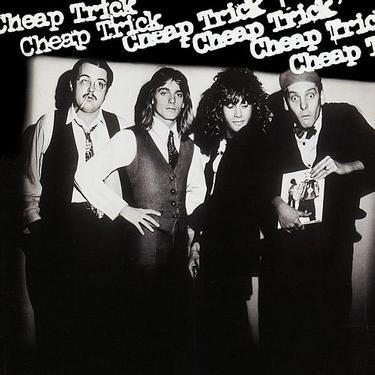
Cheap Trick (1977)

1.ELO Kiddies
2.Daddy Should Have Stayed in High School
3.Taxman, Mr. Thief
4.Cry, Cry
5.Oh Candy
6.Hot Love
7.Speak Now or Forever Hold Your Piece
8.Mandocello
9.He's a Whore
10.The Ballad of T.V. Violence
--Bonus Tracks--
11.Lovin' Money
12.I Want You To Want Me (early version)
13.Lookout
14.You're All Talk (early version)
15.I Dig Go-Go Girls
If ever there was a record that captured the spirit of rock 'n' roll rebellion in its purest, most unpretentious form, it was Cheap Trick's debut. Few albums have emerged with such an assured sound, yet garnered so little attention at the time of release. Hindsight, of course, has been kinder. The record now stands as one of the most exhilarating first salvos in modern rock—an album that echoed with the ghosts of power pop's melodic clarity while simultaneously crashing through the gates with the blunt force of punk.
Formed in the Midwestern haze of Illinois-Wisconsin bar circuits, Cheap Trick honed their act not in the heady studios of Los Angeles, but in the sweaty chaos of beer-stained venues. They were, in essence, an anti-70s band—eschewing the self-important bombast of prog, the spandex of glam, and the indulgence of arena rock. Their music had a crunch, a sting, a propulsion that made the term “power pop” sound less like a compromise and more like a revolution. And yet, melodies soared. Hooks abounded. This was music that punched and purred with equal measure.
Lyrically, the debut flirted with subject matter that, for the 1970s, verged on the taboo. The Ballad of T.V. Violence felt like a nightmarish fairy tale with its serial killer overtones, while Daddy Should Have Stayed in High School and He's a Whore prodded societal nerves with disarming cheerfulness. Even Oh Candy—a lament for a friend lost to suicide—was wrapped in an upbeat sheen. It was subversion with a smile. One could sing along, even as the content twisted the gut.
Yet Cheap Trick were not just sonically subversive. Visually, they upended expectations. Lead guitarist and mastermind Rick Nielsen looked like a cartoonist’s rendition of a mad genius—bowtie, baseball cap, and all. Drummer Bun E. Carlos resembled your neighborhood accountant. Meanwhile, Robin Zander, all golden locks and cheekbones, looked every inch the rock idol—until he opened his mouth and revealed a voice capable of crooning, snarling, or wailing, sometimes all in the same track. On Mandocello, the album’s lone ballad, Zander trades theatrics for tenderness and delivers a masterclass in vocal subtlety.
What’s most remarkable is how current this debut still sounds. It's tight, unfiltered, and alive with the sort of energy that many bands spend careers chasing. Decades on, the original album was supplemented with bonus tracks in its CD reissue, including a compelling early version of I Want You to Want Me—a song destined to become a global hit in its later live incarnation at Budokan, though arguably never as raw and perfect as it is here.
In truth, Cheap Trick’s debut wasn’t ahead of its time—it was outside of it. It didn’t chase trends, and so it remains untethered by them. A classic in the truest sense, it endures not because it demanded attention, but because it never needed to.
In Color, and later as their biggest hit single
at the time on the live release At Budokan.
The version of the song here is arguably the best of the bunch.
Go back to the main page
Go To Next Review